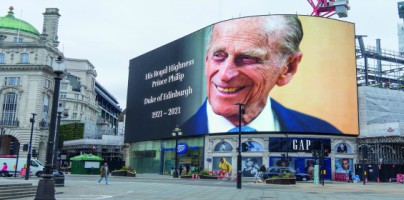Academy pays tribute to HRH The Prince Philip, Duke of Edinburgh
Published: 19 May, 2021
The Royal Academy of Engineering has paid tribute to its Senior Fellow, HRH The Prince Philip, Duke of Edinburgh. The Academy highlighted how the HRH the Duke of Edinburgh was always a keen advocate of the role and importance of engineering in society.
He was closely connected with engineering in his early career as a Naval officer during and after World War II, and it was his vision that led subsequently to the formation of the Fellowship, later the Royal Academy of Engineering.
In 1965, His Royal Highness became President of the Council of Engineering Institutions (CEI), which was then formed of 12 professional engineering institutions. The new President was concerned that the CEI should create a path for engineers, anywhere in the profession, to reach professional status. This was achieved in 1971 with the formation of the Engineers’ Registration Board and the creation of different professional levels such as Chartered Engineer.
Prince Philip presented the first MacRobert Award at Buckingham Palace to recognise the successful development of innovative ideas in UK engineering and its contribution to national prosperity and international prestige. The 1969 Award was made jointly to Freeman, Fox & Partners for the Severn Bridge and to Rolls-Royce for the Pegasus engine.
As early as 1966, CEI members felt that a more prestigious body was needed to provide an effective voice for the profession in national affairs, to provide advice to government and to recognise eminent engineers and technologists. After discussion with the CEI, His Royal Highness set down his own vision for a Fellowship of Engineering, including what form and role it should have. Prompted by his strong support, the CEI completed the formation of the Fellowship in 1976 and the new Fellowship was announced at Guildhall on 9 February 1976. His Royal Highness stepped down as President of the CEI and assumed the title of Senior Fellow of the Fellowship of Engineering.
Some 130 engineers, drawn initially from the Royal Society and the professional engineering institutions, were invited to become Founding Fellows. The Fellowship’s inaugural meeting was held in the Throne Room of Buckingham Palace on 11 June 1976. In 1989 Prince Philip again showed his high regard for the engineering profession by agreeing to the commissioning of the Prince Philip Medal, to be “awarded periodically to an engineer of any nationality who has made an exceptional contribution to engineering as a whole through practice, management or education”.
The Fellowship grew increasingly independent of the CEI, both in its vision and activities, until in 1992 it acquired its own Royal title as the Royal Academy of Engineering. Since then, the Academy said His Royal Highness gave tireless support to the Academy, attending numerous events and adding his voice to its activities, including the Queen Elizabeth Prize for Engineering.
In 2012, His Royal Highness graciously agreed for the newly refurbished London home of the Academy, 3 Carlton House Terrace, to be named “Prince Philip House”. Sir John Parker GBE FREng, President of the Royal Academy of Engineering 2011-2014, commented: “Without the vision and commitment of HRH The Duke of Edinburgh there would be no Royal Academy of Engineering. In the 1970s he invited a number of the country’s eminent Engineers to the Palace to discuss his concept for an Academy of Fellows who would be drawn from all branches of engineering. He wanted to see engineering represented, in its full range of capabilities, by the top professionals who could bring influence to bear upon a wide range of issues and policy challenges facing the country.
“It was very fitting that the Academy’s new home was renamed Prince Philip House in 2012 to recognise his vision in driving the formation of the Academy all those years ago, but also to acknowledge the distinguished and unstinting service he had rendered to engineering and the Academy.
He made a super speech on that naming day about the formation of the Academy and implied that it was among the most important of his life’s decisions. “Our Senior Fellow was a uniquely gifted man with an uncluttered vision of what needed to be done. He will be deeply missed by all of us in the engineering profession, but his legacy will live on through the work of the Royal Academy of Engineering.”
https://www.linkedin.com/company/the-royal-academy-of-engineering/







